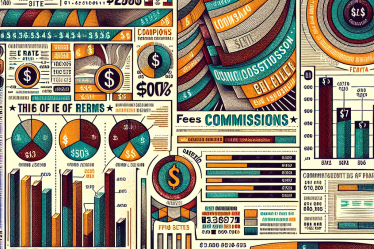
Essential Insights
- Unlock a variety of tactics to build your down payment stash — from ramping up your savings and slashing day-to-day costs to hunting for down payment aid programs.
- You’re not locked into the myth of a 20% down payment. Standard mortgages can start as low as 3%, with FHA loans requiring just 3.5% upfront.
- According to a Bankrate survey, 52% of hopeful buyers find down payments and closing costs to be the steepest hurdles on their path to owning a home.
To tackle the challenge, here’s a curated list of proven saving tricks, how much cash you should aim to lay down, plus a breakdown of extra fees you’ll want on your radar.
Figuring Out Your Down Payment Needs
Forget the old 20% rule – the reality is way more flexible. Various loan programs set different minimums. Let’s size up these options:
| Conventional (Less than 20% down) | 3% – 20% | Typically around 700 | Varies by lender |
| FHA Loans | 3.5% | Usually lower than conventional loans | Required |
Remember, the required down payment is only part of the equation; the home’s price tag massively influences the total cash you’ll need upfront.
June’s median home price in the U.S. topped out at a jaw-dropping $435,300 (National Association of Realtors). But prices ebb and flow dramatically by region. For instance, homes in the West median $636,100, while the Midwest clocks in at $337,600. Detroit homebuyers face a median of $293,900.
Once you nail down your dream home’s price range, your savings target becomes clearer, and you can chalk out a plan to stack away the required funds.
What’s the Average Down Payment?
The median deposit on a home lands around 18%, per National Association of Realtors data. For greenhorn buyers stepping into the market for the first time, that number shrinks to about 9%.
Given today’s rising interest rates — a win for savers — consider stashing your down payment in accounts paying north of 4% APY, offered by select banks and credit unions. If your savings currently linger in low-yield accounts, think about switching gears.
Smart Savings Vehicles to Consider
- Certificates of Deposit (CDs): Locked-in rates with definite timelines. Keep your homebuying horizon in mind, as early withdrawals usually trigger penalties.
- Side Hustles: Channel your hobbies into income streams that fatten your down payment fund.
Finding Help: Down Payment Assistance Programs
Various programs exist providing loans that might be deferred or forgiven, and grants to ease the financial burden. Eligibility often hinges on income brackets and geographic location. Begin your quest with local or state housing authorities.
Trim Your Spending — Save More
Looking to bulk up your down payment pot? Cutting back can pay off:
- Slash discretionary costs – Things like streaming subscriptions, nights out, delivery services can add up. You don’t need to go cold turkey, but trimming the fat helps.
- Negotiate bills – Shop around for perks on car insurance, internet, or phone plans to squeeze savings.
- Chip away at debt – Lightening your monthly obligations not only boosts mortgage approval chances but frees up more cash to save.
Not everyone can pull this off, but moving back in with family or sharing digs with a roommate can turbocharge your savings. Our 2025 Home Affordability Report notes that 24% of hopeful buyers would consider this strategy to find cheaper housing options.
Ask for a Pay Raise
Depending on your workplace climate and your contributions, a well-timed conversation might elevate your paycheck, furnishing extra savings for your home fund and easing your lending prospects.
Shift Your Saving Priorities
Your piggy bank likely juggles multiple goals. When zeroing in on homeownership, reassess your bigger financial picture. Younger savers contributing steadily to retirement accounts such as a 401(k) or IRA might temporarily dial back those inputs to supercharge their down payment pot. Just be sure to at least snag your employer’s matching funds, and pick up your regular contributions once your down payment goal is met.
Keep Your Emergency Stash Separate
Separate your down payment savings from your emergency fund — ideally covering three to six months of essential expenses. Unless your emergency fund is unusually hefty, it shouldn’t bankroll your down payment. After buying, that cushion will be vital to handle inevitable maintenance and unexpected repairs.
How Long Does It Take to Save?
Saving timelines vary widely based on the size of your down payment and your monthly saving power. Location is a heavyweight factor: putting 10% down on a San Jose home dwarfs the same percentage on a house in Jackson, Mississippi.
Another twist: you might choose to put down less cash upfront in exchange for a higher monthly mortgage payment.
Additional Expenses to Budget For
While your down payment likely dominates your upfront costs, don’t overlook other essential outlays:
- Closing costs: These fees—covering origination, title insurance, appraisals, and more—can set you back an additional 2–5% of your loan amount.
- Moving expenses: Distance traveled and volume of possessions can quickly rack up your moving bill.
Survey Insights & Methodology
Bankrate’s Home Affordability Report draws from YouGov Plc surveys, completed online with nationally representative sampling. The down payment survey gathered data from 2,408 adults (1,270 homeowners) in January 2025. Meanwhile, the broader homeownership survey involved 2,317 adults in March 2024.
Hidden Costs of Homeownership Study analyzes average yearly expenses linked to single-family homes nationwide and state-by-state in 2024 versus 2020. It includes property taxes, insurance, energy bills, internet, cable, and home maintenance, excluding mortgage payments and other debts. Inflation adjustments were made via the Consumer Price Index to offer the most up-to-date picture.


